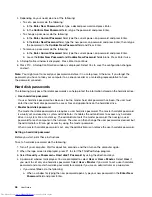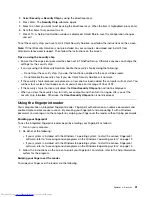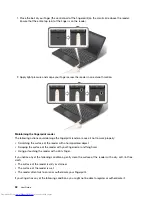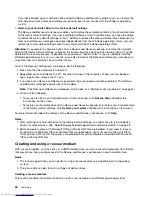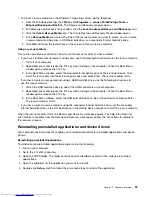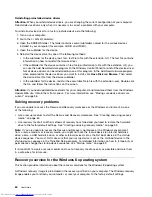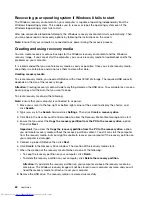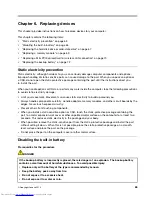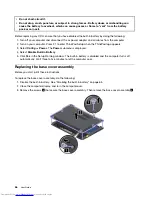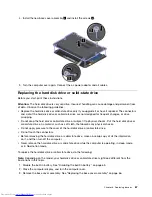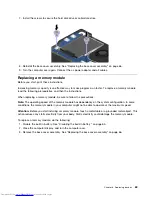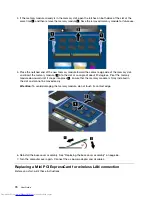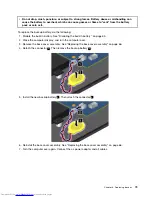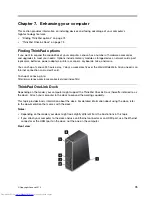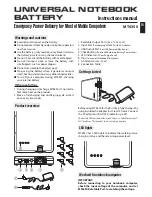
Reinstalling preinstalled device drivers
Attention:
When you reinstall device drivers, you are changing the current configuration of your computer.
Reinstall device drivers only when it is necessary to correct a problem with your computer.
To reinstall a device driver for a factory-installed device, do the following:
1. Turn on your computer.
2. Go to the
C:\SWTOOLS
directory.
3. Open the DRIVERS folder. The folder contains several subfolders named for the various devices
installed in your computer (for example, AUDIO and VIDEO).
4. Open the subfolder for the device.
5. Reinstall the device driver by one of the following methods:
• In the subfolder for the device, look for a text file (a file with the extension .txt). The text file contains
information on how to reinstall that device driver.
• If the subfolder for the device contains a file of setup information (a file with the extension .inf), you
can use the Add New Hardware program (in the Windows Control Panel) to reinstall the device driver.
Not all device drivers can be reinstalled by use of this program. In the Add New Hardware program,
when prompted for the device driver you want to install, click
Have Disk
and
Browse
. Then select
the device driver file from the device subfolder.
• In the subfolder for the device, look for the executable file (a file with the extension .exe). Double-click
the file, and follow the instructions on the screen.
Attention:
If you need updated device drivers for your computer, do not download them from the Windows
Update Web site. Obtain them from Lenovo. For more information, see “Making sure device drivers are
current” on page 96.
Solving recovery problems
If you are unable to access the Rescue and Recovery workspace or the Windows environment, do one
of the following:
• Use a rescue medium to start the Rescue and Recovery workspace. See “Creating and using recovery
media” on page 62.
• Use recovery media if all other methods of recovery have failed and you need to restore the hard disk
drive to the factory default settings. See “Creating and using recovery media” on page 55.
Note:
If you are unable to access the Rescue and Recovery workspace or the Windows environment
from a rescue medium or recovery media, you might not have the rescue device (an internal hard disk
drive, a disc, a USB hard disk drive, or other external devices) set as the first boot device in the startup
device sequence. You must first make sure that your rescue device is set as the first boot device in the
startup device sequence in the ThinkPad Setup program. For detailed information on how to temporarily or
permanently change the startup device sequence, see “Startup menu” on page 89.
It is important to create a rescue medium and a set of recovery media as early as possible and store them
in a safe place for future use.
Recovery overview for the Windows 8 operating system
This section provides information about the recovery solutions for the Windows 8 operating system.
A Windows recovery image is preinstalled in the recovery partition on your computer. The Windows recovery
image enables you to refresh your computer, or reset your computer to the factory default settings.
60
User Guide
Summary of Contents for ThinkPad S440
Page 1: ...User Guide ThinkPad S440 ...
Page 6: ...iv User Guide ...
Page 16: ...Save these instructions xiv User Guide ...
Page 34: ...18 User Guide ...
Page 80: ...64 User Guide ...
Page 90: ...74 User Guide ...
Page 110: ...94 User Guide ...
Page 116: ...100 User Guide ...
Page 134: ...118 User Guide ...
Page 138: ...122 User Guide ...
Page 144: ...128 User Guide ...
Page 148: ...132 User Guide ...
Page 155: ......
Page 156: ......

